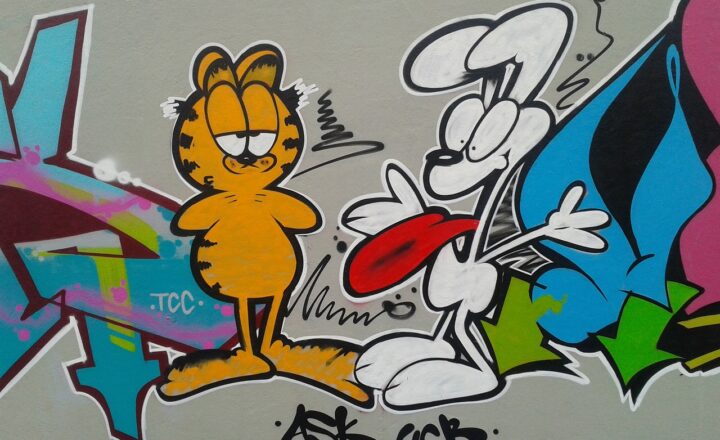The Truth Behind 2000s Rock Anthems and Their Alleged Hidden Messages
November 12, 2024

The 2000s was a remarkable decade for rock music, giving birth to a range of sub-genres and iconic anthems that defined a generation. Bands like Linkin Park, My Chemical Romance, and Green Day created tracks that became synonymous with youth culture, rebellion, and emotional catharsis. Amidst the catchy riffs and explosive choruses, many listeners speculated about hidden messages within these tunes. Were these merely coincidences, or did artists intentionally weave deeper meanings into their lyrics? Let’s dive into the enigmatic world of 2000s rock anthems and uncover the truth behind their alleged hidden messages.
1. The Rise of Rock Anthems in the 2000s
The beginning of the 2000s saw a resurgence in rock music, fueled by the popularity of festivals, the rise of the internet, and a youthful discontentment. Albums like “Hybrid Theory” by Linkin Park and “American Idiot” by Green Day became cultural phenomena, each dealing with themes that resonated deeply with audiences.
For these bands, music served not just as entertainment, but as a platform to express their thoughts and comments on society.
– Linkin Park combined nu-metal with electronic elements, addressing issues like mental health and personal struggle.
– Green Day criticized political apathy and societal issues through catchy melodies and sharp lyrics.
– My Chemical Romance fused punk rock with theatricality, creating narratives that explored love, mortality, and identity.
As these bands flourished, many fans began to dissect every lyric, searching for hidden meanings, codes, and messages.
2. Decoding Hidden Messages: Myth or Reality?
The phenomenon of deciphering hidden messages in music is not new; it goes back decades, from the alleged reverse messages in Beatles records to the whisperings in Led Zeppelin’s works. However, in the 2000s, many rock fans particularly focused their energies on discovering what lies beneath the surface.
Some notable tracks sparked intense speculation:
– “Boulevard of Broken Dreams” by Green Day: This song’s themes of loneliness and searching for meaning led fans to theorize about its deeper messages regarding depression and societal pressures.
– “Smells Like Teen Spirit” by Nirvana: While released in the 90s, its lingering impact was felt in the 2000s. Critics often debated whether Kurt Cobain was satirizing youth culture or simply expressing apathy.
– “Welcome to the Black Parade” by My Chemical Romance: Delving into themes of death and memory, fans speculated that it contained messages about facing mortality and the afterlife.
Often, these interpretations are personal; what resonates as a hidden message to one listener may entirely escape another.
3. Symbolism and Themes in 2000s Rock Lyrics
There’s no denying that many rock songs from the 2000s are laden with symbolism and themes that evoke deeper discussions. A few common motifs emerge:
– Rebellion and Disillusionment: Many songs embodied a rebellious spirit aimed at societal norms and expectations. This is evident in tracks like *“We Are the Champions” by Queen (revived in the 2000s)*, emphasizing a sense of victory against odds.
– Mental Health and Inner Struggle: Bands like Linkin Park often addressed anxiety, anger, and existential crises, offering listeners a relatable outlet amidst societal pressures. Lyrics full of pain and longing resonate deeply with those struggling silently.
– Social and Political Commentary: The political climate of the early 2000s, with events like 9/11 and subsequent wars, influenced many anthems. Green Day’s *“American Idiot”* highlighted a collective discontent with governmental decisions, proving that music serves as a mirror reflecting societal issues.
These themes contributed greatly to debates regarding hidden messages—whether intentional or simply a result of profound lyricism.
4. The Role of Labeling and Media Influence
As music consumption shifted to digital platforms, the role of media became increasingly influential. Online forums and social media empowered fans to share their interpretations widely, creating a snowball effect. When one theory gained traction, it often led to others joining in, building a larger narrative around specific songs.
Major music publications played a role in shaping these conversations, labeling songs as anti-establishment or commenting on specific events, which guided listeners towards forming specific interpretations. Artists who embraced this discourse recognized the power of ambiguity; as such, they often encouraged listeners to explore their interpretations.
– Linkin Park famously stated that their lyrics were meant to be personal, provoking thought, and allowing listeners to perceive their own meanings.
– My Chemical Romance was known for embracing themes of gothic romance and existential dread, inviting listeners to find their truths within the chaos.
This approach gave rise to the question: are these hidden messages always intentional, or does the audience play an active role in piecing them together?
5. Artists Speak Out: Intentionality vs. Interpretation
Interviews with 2000s rock stars often reveal their thoughts on the meanings behind their music and any perceived hidden messages:
– Billie Joe Armstrong of Green Day has talked about how “American Idiot” is a reflection of society’s response to fear and anger, suggesting that while these feelings are real, the interpretation of the song could vary.
– Chester Bennington of Linkin Park expressed that the band’s lyrics are personal experiences, often multilayered, but ultimately aim to provide listeners with an outlet to resonate with their struggles.
– Gerard Way of My Chemical Romance has stated that they intentionally embraced ambiguity in their storytelling, allowing fans to draw their conclusions about narratives and themes.
Ultimately, this open-ended approach allows for a dialogue between the artist and the audience, leading to the exploration of deeper themes and personal connections.
6. The Enduring Legacy of 2000s Rock Anthems
Today, many of those songs continue to echo through playlists, both nostalgic celebrations of youth and reflections on societal issues that remain relevant. As new generations discover these iconic tracks, the debates surrounding their meanings and messages persist.
While some may seek to dismantle every lyric’s purpose, it’s essential to note that these songs often serve as markers of time—representations of cultural attitudes, personal experiences, and collective feelings.
As anthems that defined a generation continue to inspire and provoke thought, they remind us of our shared experiences, struggles, and desires for understanding. Whether seen as hidden messages or relatable expressions of personal angst, the potency of 2000s rock anthems stands resolute.
Conclusion
The truth behind the hidden messages in 2000s rock anthems may remain elusive, yet it generates discussions that breathe life into these songs. They serve as a soundtrack of rebellion, reflection, and resilience. Every listener carries unique interpretations shaped by personal experiences. Regardless of whether they were composed with layered meanings in mind, these tracks will always hold a special place in the hearts of fans, offering solace and camaraderie throughout the journey of life.
In an era where music continues to evolve, revisiting the anthems of the past reminds us of the power of lyrics, the intricacies of interpretation, and the shared human experience that connects us all.






